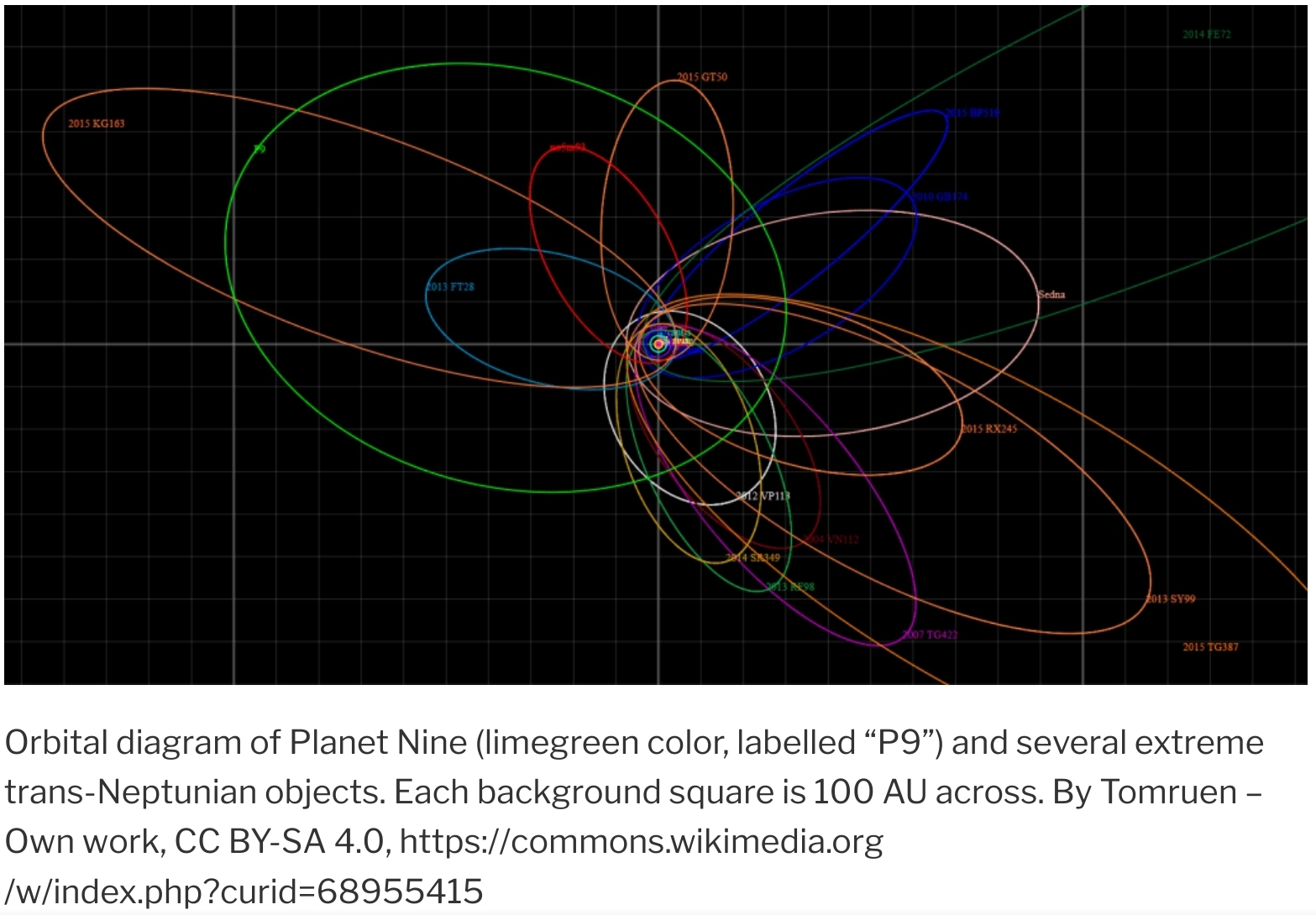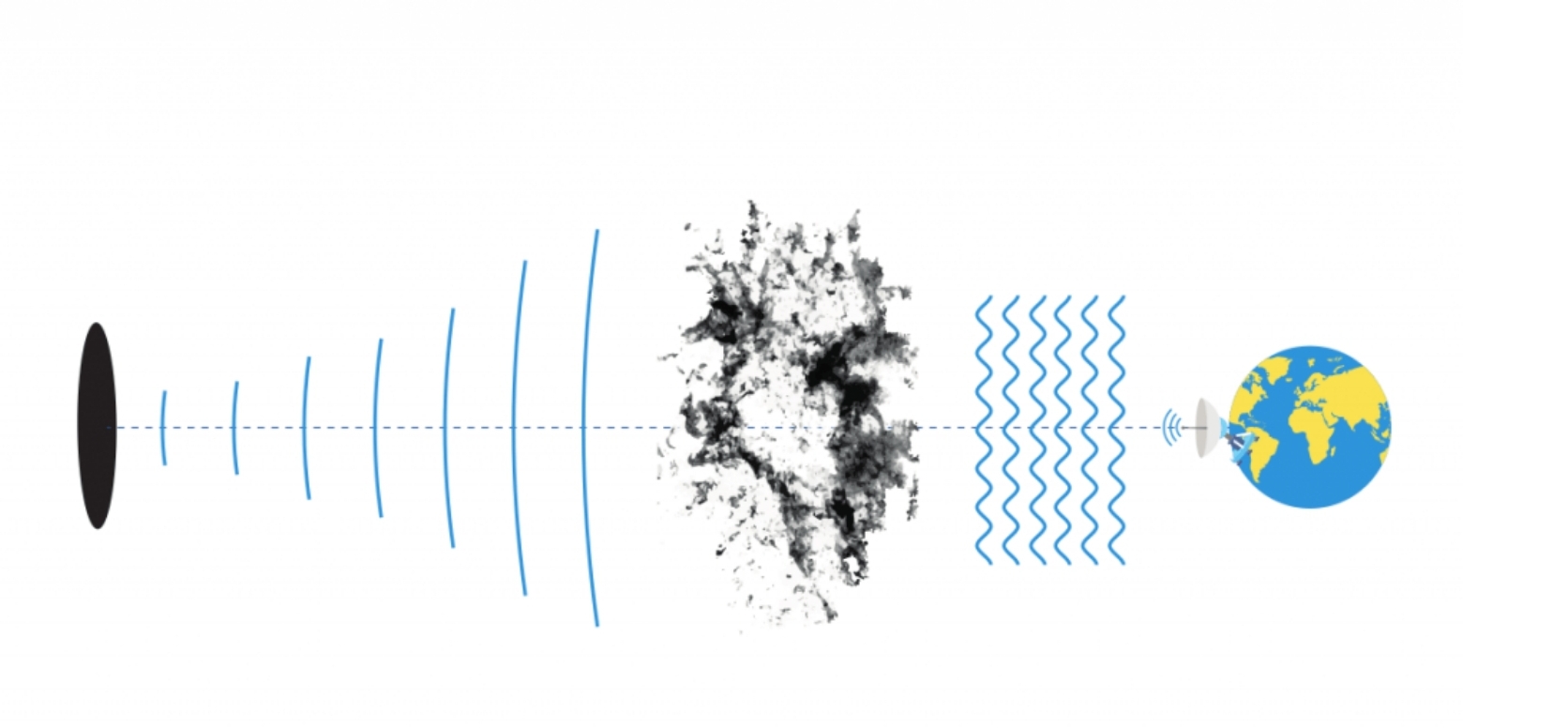It looks like you're using an Ad Blocker.
Please white-list or disable AboveTopSecret.com in your ad-blocking tool.
Thank you.
Some features of ATS will be disabled while you continue to use an ad-blocker.
10
share:
A year ago, this alternative planet nine hypothesis was launched and picked up by popular science magazines and sensation seeking papers alike. I
thought it was an amusing idea and moved on, knowing it would take a while to have the equipment to prove or rule out the slight chance it could be
true.

A black hole with a mass between 5 and 15 time that of earth would have an event horizon the size of a grapefruit, most articles claim.
A short wiki on microlensing:
A few days back I stumbled upon a article about LOFAR. It was lining a story about a few cases where quasars had been found twinkeling like stars seen through earths atmosphere.
Now, I know there are multiple things that can cause the twinkle and it is stretching a stretch beyond its breaking point connecting the observed anomaly to a (theorized) primordial black hole, but I can see a black hole the size of a grapefruit have enough hot plasma swirling around it to twinkle a quasar for a few minutes when it passes between an observer on earth and the feasting beast being observed.
How cool would it be to have our own little black hole to play with.
It's soooo on my wishlist.
For nearly 5 years, growing numbers of scientists have blamed the weird orbits of distant solar system objects on the gravitational effects of an as-yet-undiscovered “Planet Nine” that lies in the icy realm far beyond Neptune.

Previous studies have suggested Planet Nine, which some astronomers refer to as “Planet X,” has a mass between five and 15 times that of Earth and lies between 45 billion and 150 billion kilometers from the sun. At such a distance, an object would receive very little light from the sun, making it hard to see with telescopes.
To detect objects of that mass, whether planets or black holes, astronomers can look for weird blobs of light formed when light “bends” around the object’s gravitational field on its journey through the galaxy. Those anomalies would come and go as objects move in front of a distant star and continue in their orbit.
But a pair of physicists is now floating an intriguing idea that could offer a new way to search for the object: What if that supposed planet is actually a small black hole?planet-nine-may-actually-be-black-hole
A black hole with a mass between 5 and 15 time that of earth would have an event horizon the size of a grapefruit, most articles claim.
A short wiki on microlensing:
With microlensing, the lens mass is too low (mass of a planet or a star) for the displacement of light to be observed easily, but the apparent brightening of the source may still be detected. In such a situation, the lens will pass by the source in a reasonable amount of time, seconds to years instead of millions of years. As the alignment changes, the source's apparent brightness changes, and this can be monitored to detect and study the event.
Wiki
A few days back I stumbled upon a article about LOFAR. It was lining a story about a few cases where quasars had been found twinkeling like stars seen through earths atmosphere.
Radio observations have turned up evidence of a cloud of hot plasma near — or even in — the solar system. But its distance estimate is still up for debate.
Researchers didn’t observe the mystery cloud directly. Instead, they saw its effect on the radio waves of a background quasar known as J1402+5347. Its presence caused the quasar’s light to flicker on a timescale of minutes. “It’s a spectacular twinkler, and a very nice surprise,” says Mark Walker (Manly Astrophysics, Australia), who studies intra-hour variability of quasars but wasn’t involved in the new work.
Until recently, astronomers knew of three rapidly twinkling quasars, whose scintillations suggested the presence of plasma clouds at distances of a few tens of light-years. But the new cloud is much closer, says study lead Tom Oosterloo (ASTRON Netherlands Institute for Radio Astronomy).
twinkling-quasar-hints-at-mysterious-nearby- plasma-cloud-
Now, I know there are multiple things that can cause the twinkle and it is stretching a stretch beyond its breaking point connecting the observed anomaly to a (theorized) primordial black hole, but I can see a black hole the size of a grapefruit have enough hot plasma swirling around it to twinkle a quasar for a few minutes when it passes between an observer on earth and the feasting beast being observed.
How cool would it be to have our own little black hole to play with.
It's soooo on my wishlist.
originally posted by: AugustusMasonicus
originally posted by: D.Wolf
How cool would it be to have our own little black hole to play with.
It's soooo on my wishlist.
'Disposing of evidence' would be #1 on my list of things to do with it.
Just disposable purposes? Hell, I'd venture in and see if the rumors about DB's ---
Actually, never mind. Maybe some questions are best left unanswered. I have a feeling it would work out to be living through a really bad sci-fi B movie.
a reply to: D.Wolf
Its been talked about that the planet 9 is really a brown dwarf, or that it collided with another planet thus forming the astroid belt between Jupiter and Mars, sending its moon Mars into its own orbit and what was left of it formed our moon. I forgot where I read that, interesting none the less.
Also arnt we creating mini black holes here already with the cern colliders?
Its been talked about that the planet 9 is really a brown dwarf, or that it collided with another planet thus forming the astroid belt between Jupiter and Mars, sending its moon Mars into its own orbit and what was left of it formed our moon. I forgot where I read that, interesting none the less.
Also arnt we creating mini black holes here already with the cern colliders?
a reply to: dragonridr
Christopher Nolan predicted the same. Our future selves creating a wormhole near Saturn to save Earth from the blight.
Interstellar
www.imdb.com...
Christopher Nolan predicted the same. Our future selves creating a wormhole near Saturn to save Earth from the blight.
Interstellar
www.imdb.com...
There is only one way to ensure mankind's survival: Interstellar travel. A newly discovered wormhole in the far reaches of our solar system allows a team of astronauts to go where no man has gone before, a planet that may have the right environment to sustain human life.
a reply to: Gothmog
According to wiki...22 micrograms
wiki
According to wiki...22 micrograms
wiki
Minimum mass of a black hole
In principle, a black hole can have any mass equal to or above about 2.2×10−8 kg or 22 micrograms (the Planck mass). To make a black hole, one must concentrate mass or energy sufficiently that the escape velocity from the region in which it is concentrated exceeds the speed of light.
originally posted by: TheConstruKctionofLight
a reply to: Gothmog
According to wiki...22 micrograms
wiki
Minimum mass of a black hole
In principle, a black hole can have any mass equal to or above about 2.2×10−8 kg or 22 micrograms (the Planck mass). To make a black hole, one must concentrate mass or energy sufficiently that the escape velocity from the region in which it is concentrated exceeds the speed of light.
That IS NOT describing a self-sustaining black hole .
Do more research
new topics
-
Ditching physical money
History: 27 seconds ago -
One Flame Throwing Robot Dog for Christmas Please!
Weaponry: 21 minutes ago -
Don't take advantage of people just because it seems easy it will backfire
Rant: 35 minutes ago -
VirginOfGrand says hello
Introductions: 1 hours ago -
Should Biden Replace Harris With AOC On the 2024 Democrat Ticket?
2024 Elections: 1 hours ago -
University student disciplined after saying veganism is wrong and gender fluidity is stupid
Education and Media: 4 hours ago -
Geddy Lee in Conversation with Alex Lifeson - My Effin’ Life
People: 5 hours ago -
God lived as a Devil Dog.
Short Stories: 5 hours ago -
Police clash with St George’s Day protesters at central London rally
Social Issues and Civil Unrest: 7 hours ago -
TLDR post about ATS and why I love it and hope we all stay together somewhere
General Chit Chat: 8 hours ago
top topics
-
Hate makes for strange bedfellows
US Political Madness: 10 hours ago, 18 flags -
Who guards the guards
US Political Madness: 13 hours ago, 13 flags -
Police clash with St George’s Day protesters at central London rally
Social Issues and Civil Unrest: 7 hours ago, 8 flags -
TLDR post about ATS and why I love it and hope we all stay together somewhere
General Chit Chat: 8 hours ago, 7 flags -
University student disciplined after saying veganism is wrong and gender fluidity is stupid
Education and Media: 4 hours ago, 7 flags -
Should Biden Replace Harris With AOC On the 2024 Democrat Ticket?
2024 Elections: 1 hours ago, 4 flags -
Has Tesla manipulated data logs to cover up auto pilot crash?
Automotive Discussion: 14 hours ago, 2 flags -
Don't take advantage of people just because it seems easy it will backfire
Rant: 35 minutes ago, 2 flags -
Geddy Lee in Conversation with Alex Lifeson - My Effin’ Life
People: 5 hours ago, 2 flags -
God lived as a Devil Dog.
Short Stories: 5 hours ago, 2 flags
active topics
-
Ditching physical money
History • 0 • : annonentity -
One Flame Throwing Robot Dog for Christmas Please!
Weaponry • 1 • : Sookiechacha -
Should Biden Replace Harris With AOC On the 2024 Democrat Ticket?
2024 Elections • 23 • : worldstarcountry -
Don't take advantage of people just because it seems easy it will backfire
Rant • 1 • : worldstarcountry -
Thousands Of Young Ukrainian Men Trying To Flee The Country To Avoid Conscription And The War
Other Current Events • 121 • : NorthOS -
University student disciplined after saying veganism is wrong and gender fluidity is stupid
Education and Media • 17 • : DBCowboy -
-@TH3WH17ERABB17- -Q- ---TIME TO SHOW THE WORLD--- -Part- --44--
Dissecting Disinformation • 632 • : daskakik -
So I saw about 30 UFOs in formation last night.
Aliens and UFOs • 43 • : DaydreamerX -
"We're All Hamas" Heard at Columbia University Protests
Social Issues and Civil Unrest • 261 • : YourFaceAgain -
Why did Phizer team with nanobot maker
Medical Issues & Conspiracies • 18 • : annonentity
10


